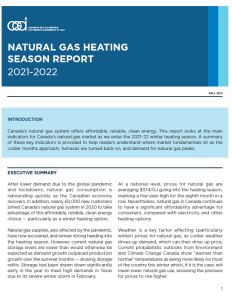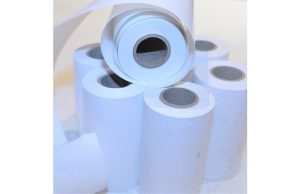Lawsuit reports that the exposure of AFFF fire foam causes cancer in firefighters

On March 24, the Federal Methodist Court of South Carolina filed a lawsuit claiming that a Georgia firefighter suffered from cancer due to contact with aqueous film forming foam (AFFF).
The lawsuit listed several defendants, including 3M and DuPont, and accused them of negligence, battery, insufficient warning, design defects, fraudulent concealment, violation of express and implied warranties, and wanton behavior. The accusation seeks punitive damages, accusing the defendants of “deliberately and shamelessly ignoring their safety and maliciously”
AFFF is a fire extinguishing foam used to extinguish petroleum based fires. It contains perfluorinated and polyfluoroalkane substances (PFAS) and is reported as “toxic”.
According to the lawsuit, PFAS combines with blood protein, stays in the body for a long time, accumulates over time, and will accumulate whenever exposed. The lawsuit alleges that the defendant knew that AFFF was toxic, but manufactured and sold AFFF into firefighters’ bodies, where it continued to accumulate.
According to the indictment, the animal experiments conducted by the defendant showed that by 1970, perfluorooctanoic acid (PFOA) was toxic as a perfluorooctanoic acid. In 1990, it was confirmed that PFOA could cause testicular tumors in rats. The two rooms classified PFOA as a confirmed animal carcinogen and a possible human carcinogen. The lawsuit showed that further research conducted by the defendants, including at least 3M and DuPont in 2000, showed that PFOA could induce testicular, liver and pancreatic cancer cancer in mice.
The indictment contends that when something causes cancer in animals and how it causes cancer is not known, it must be assumed that something may be a carcinogen of human beings before knowing how it causes cancer. The mechanism of PFAS carcinogenesis is still unclear.
According to the lawsuit, according to the research and tests conducted by the defendant, as of 1980, perfluorooctanoic acid benzoic acid and another perfluorooctanoic acid benzoic acid (PFOS) could combine with blood proteins and accumulate in the body, and existed in the body for a long time.
According to the indictment, by 1990, the defendants (at least DuPont) had realized that the incidence rate of cancer for young and old people exposed to PFOA had increased. At least in the further research and testing completed by 3M and DuPont in 2010, the incidence rate of cancer for young and old people exposed to PFOA had also increased.
According to the indictment, the defendant in litigation stopped using some PFAS at some time at the request of the US Environmental Protection Agency, and used newer PFAS including “short chain PFAS”. It is said that in the indictment, the defendant realized that short chain PFAS also accumulated in the body. Liver cancer and pancreatic cancer in rats.
In 2012, an independent science group named C8 Science Group published a report that 0.05 parts per billion of PFOA in drinking water was exposed for one year, and a “possible association” was found between testicular cancer and renal cancer.
According to discontented people, PFAS has been found in 99% of the population of the United States. The lawsuit contends that PFAS levels in human blood cannot be accepted.
The indictment has repeatedly raised objections to the validity of the scientific evidence of the PFAS danger of the defendant under litigation, but “deliberately, deliberately, recklessly and/or negligently refused to fund or conduct any scientific research”. These studies argue that they can generate data sufficient to meet their own standards.
The lawsuit is based on suspicion of negligence or failure to prevent injury with reasonable care, and claims damages. The complaint said: “The defendant has the responsibility to prevent PFAS in AFFF from entering human blood and accumulating continuously with reasonable care.” “No performance”.
The lawsuit said that the defendant knew that PFAS was accumulated in the body and might cause harm to people, but he was still careless and defended that the plaintiff was suffering from cancer.
The objection application claims compensation on the basis of battery suspicion, and the defendant pleads that he failed to request or obtain the plaintiff’s permission or consent, so that PFAS can accumulate in it. The lawsuit shows that such entry and accumulation is an illegal, rude and harmful physical invasion to the plaintiff, and unreasonably disturbs the plaintiff’s physical use and possession.
The complaint claims that the warning is insufficient. The defendant must know or know that the exposure to AFFF is harmful to human health. The exposure to AFFF may be for the purpose of manufacturing and selling AFFF.
According to the lawsuit, the defendant did not warn PFAS to enter the body, accumulate in the body and cause harm.
AFFF complained: “It is toxic and has unreasonable risk, so there are defects in the design.” According to the lawsuit, the defendant knew that it was toxic and could manufacture and sell alternative formulas for products without toxic PFAS, which were “usable, practical and technically feasible”.
This lawsuit is suspected that the defendant cheated consumers to conceal the toxicity of PFAS, deliberately made false statements about the safety of AFFF, and persuaded people to buy and use AFFF.
According to the complaint, the defendant explicitly and implicitly guaranteed that AFFF could be used safely according to the instructions, but in fact, it was not because it might cause cancer.
The arbitrary accusation in the complaint shows that the defendant’s behavior is “capricious, capricious and shows reckless indifference to the life, health and safety of AFFF users”.







